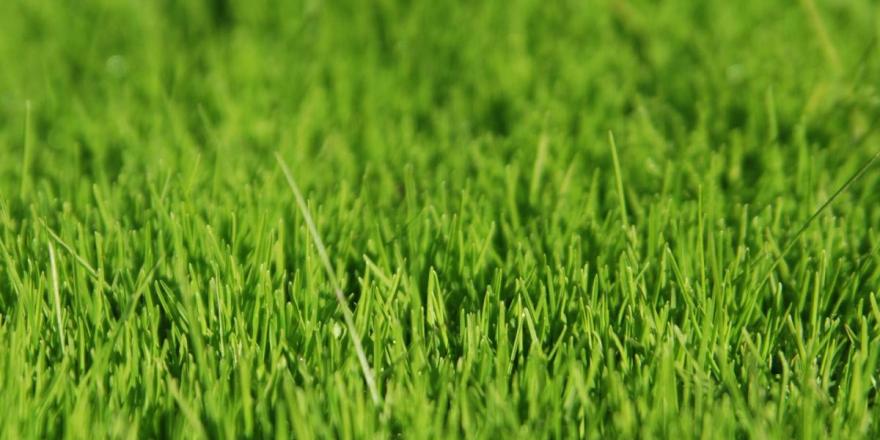
The proud owners of lush, thick, green grass understand what it takes to get and keep an enviable lawn and fertilizer is their superpower. Knowing all there is to know about how and when to fertilize is their advantage. If you have just had your lawn replaced with thick lush new sod then you want to keep it that way.
Fertilizing your grass isn't as elementary as sprinkling whatever you have in the shed on your lawn. Fertilizers all present with three numbers that tell us a lot about what's in the bag. The first number indicates how much nitrogen can be found in a particular fertilizer. The second number represents levels of phosphorus and the third, potassium. Follow this schedule and treat your lawn on a seasonal basis.
Spring
Lawns are not at their best in early spring. Waterlogged, dirty and brown grass in the spring can look like it’s on life support. It will take some work to revive that hibernating lawn. Fertilizer, when applied correctly can provide life-giving support to any lawn that has suffered through the long cold winter. Fertilizing in the spring is an important part of your year-round lawn care. It's important, however, not to fertilize too early. Allow your grass the opportunity to "wake up." Root systems are being established in early spring. If you fertilized last fall then there will still be remnants of last fall’s slow release fertilizer in your soil. In the spring, apply a 20-5-10 fertilizer mix. Be careful not to apply to early as fertilizer can easily burn vulnerable grass.
Keep in mind that there are other things you can do before it's time to fertilize. In late May or early June, before the heat of the summer arrives, apply some slow release nitrogen. This will encourage the grass to rebuild.
A good dose of nitrogen rich fertilizer will also arm your lawn. Fighting off the stresses of summer, traffic, disease, heat, and drought. Fertilizer is its defense. If you can't stand to sit around and do nothing when the snow melts and the grass that emerges looks like it’s dead, consider an herbicide. However, herbicides can be harsh on grass, so ensure your herbicide contains a little fertilizer to help your lawn fight the negative effects herbicides can have on grass.
Summer
Your summer lawn is likely a priority when it comes to your outdoor space. It sees more traffic in summer than any other time throughout the year. You've done the work in the spring to give your lawn the best start. During the summer, fertilizer will help you keeps it healthy. When temperatures rise above 27 degrees Celsius, grass will struggle. As we've all witnessed, when the temperatures rise and the rain fail to appear, growth slows, grass becomes brittle and brown tends to be the dominant colour. Fertilizer can protect your lawn from these harsh effects. Do not fertilize in the dead heat of summer. Fertilizer, without enough water, will burn grass and further challenge your lawn.
Never fertilize a dormant lawn either. Apply fertilizer to high traffic areas with a 32-0-4 mix. This will feed your lawn throughout the summer, strengthening grass blades, enabling them to recover faster from heat and drought. If weeds are your nemesis, consider applying targeted post-emergent herbicide. These fertilizers are effective in killing weeds without damaging grass. If your lawn is suffering from fungus, use a fungicide. Grub infestations will require a fertilizer with grub control.
Fall
Fertilizing your lawn in the fall is essential. How you treat your grass in the fall will greatly affect how your lawn treats you come spring. Fertilizing in the fall gives your lawn a good strong base, helping the grass to thrive in the spring. In September, your lawn will be in recovery mode. A good dose of nitrogen rich fertilizer is just what’s needed. A 20-8-8 will give it that slow growth. Be sure to apply fertilizer again in late fall with 13-25-12. The extra phosphorus will stimulate root growth late into the season. This will aid in a greener lawn earlier in the spring creating healthier grass that can fight the good fight against weeds, and insects.
We know when to fertilize our lawns and why. How we use fertilizer will affect our success in growing that green, lush lawn.
Applying fertilizer can save your grass from a slow and painful death, but if not applied properly, fertilizer can harm your grass. Apply sparingly with a spreader according to the manufacturers recommendations so you do not burn your grass with too strong a dose. If you are still unsure exactly what your grass needs from a fertilizer, have a soil test done.
Fertilizer, when applied at the right time, in the right way and in the right amounts can turn any struggling lawn into the envy of the neighbourhood. If all this seems to be more than you want to manage, consider hiring a good landscaper. Putting your lawn in the hands of the professionals might just set your mind at ease and give you nothing to do but sit back and enjoy.
